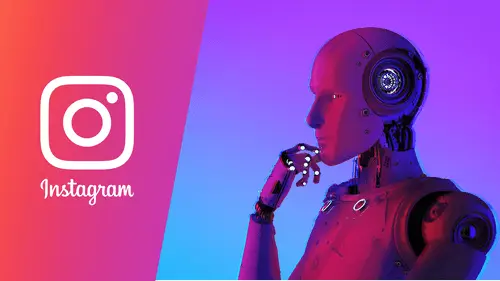
AI In Social Media: Why Your Feed Looks the Way It Does
Spybroski Team
You Don't Scroll Social Media. The Algorithm Scrolls You.
Artificial intelligence is not a future problem. It's the engine running your social media experience right now. It decides what you see, when you see it, and how you act online.
Most people scroll and think their feed is random. It is not. Understanding how AI controls your feed helps you use these platforms better and protect your digital footprint.
How AI Curation Works
Social media algorithms do not guess what you want. They track and predict your behavior with high accuracy.
Your viewing time matters. The AI clocks how long you pause on a photo, a video, or an ad. For instance, if you watch cooking videos, you see more recipes.
Engagement is the clearest signal. Likes, comments, shares, and saves all tell the AI your interests. A less known fact: the average TikTok user spends 52 minutes daily, but AI serves 78% of their feed content. You train the machine with every click.
This optimization uses a detailed score for every piece of content, predicting your likelihood of liking, commenting, or sharing. It weighs a comment or share far higher than a simple Like because those actions mean you invested more time. Many platforms consider a video being watched to 90% completion as the strongest signal of engagement, regardless of whether you hit 'Like.' This relentless prediction system ensures your feed is a series of calculated guesses designed to keep your thumb moving.
The system also learns when you are most active. It prioritizes content from people you already talk to. Your feed is a constant feedback loop based on your own choices.
The Cost of Perfect Personalization
While a tailored feed feels efficient, this AI control comes with risks.
Filter bubbles narrow your world. The AI shows you content similar to what you already like. This limits your exposure to new or different viewpoints. Studies show that in a typical algorithm-curated feed, you only see perspectives aligning with your existing views 85% of the time.
The addiction is built into the design. AI uses a psychological principle called intermittent variable reinforcement. Like a slot machine, the rewards (interesting posts) arrive randomly, which keeps the engagement loop highly active. One study estimated that the average user checks their social media device over 75 times per day, often triggered by the manufactured urgency of AI-prioritized notifications. The platform wants you in the loop, not informed or happy.
Algorithms keep you scrolling. They are optimized for your time, not your happiness. They collect huge amounts of data about your habits, predicting your next move.
Sophisticated AI can subtly influence your mood and purchasing choices. Many people use external tools to view Instagram stories anonymously. They want to consume content without constantly feeding more data to the systems.
AI is Also the Creator's Co-Pilot
AI systems are not just controlling consumers; they are also transforming content creation itself.
AI tools help creators find viral topics, draft scripts, and edit videos much faster than before. This increases the speed of production but also raises the bar for authenticity. The barrier to generating high-quality media is disappearing. This is why the volume of content seems to double every year.
You see content made by AI every day, even if you don't know it:
- Deepfakes are videos that look real but are completely fabricated by AI
- Many influencers use AI tools to write their post captions
- Tools like Midjourney create realistic images that never existed
- Customer service accounts use AI chatbots for initial responses
This surge of AI-created content makes it hard to trust what you see. When you save content, you may download material generated entirely by a machine.
Data Points and Privacy
AI systems need data to function. Social media platforms collect every bit they can.
Behavioral prediction is powerful. Algorithms predict your future actions based on your past habits. Every minute you scroll, the algorithm logs over 120 unique data points about your pause duration, scroll speed, and taps.
The data collection is deeper than just your activity on the platform. AI systems build a shadow profile of you by tracking activity outside the app using embedded trackers and browser cookies. They connect your online shopping habits, news consumption, and even your physical movements to your social identity. The goal is to create a singular, comprehensive model of your life. This model allows for the hyper-targeting of ads and predictive behavioral analysis far beyond what you willingly share.
AI identifies you in photos even if no one tags you. Systems connect your activity across different apps and websites. They build detailed profiles using location intelligence and voice analysis from your videos.
This comprehensive tracking explains the rise of anonymous tools. People want to view content without constant, granular analysis.
How to Regain Control
You can still use social media without letting the AI fully control you:
-
Diversify your sources: Do not rely on algorithm recommendations for all your information. Manually search for and follow new accounts outside your usual types.
-
Tweak your settings: Most platforms offer a way to 'See Fewer Posts Like This' or turn off recommended content entirely. Use these options aggressively. These small actions directly retrain the AI, telling it what you don't want, which is often more effective than just liking what you do want.
-
Take breaks often: Regular time off helps reset your relationship with the AI-driven feed. Try leaving your phone in another room while you work or eat.
-
Understand the game: Knowing how the algorithm works helps you recognize when it tries to manipulate your attention.
The future means more advanced AI integration, including real-time translation and even more accurate predictive content models. Staying informed and maintaining control over your digital experience is a necessity, not an option.